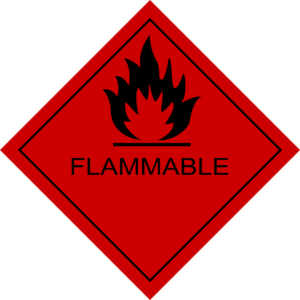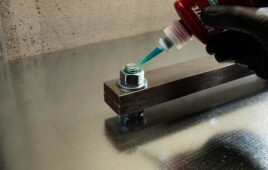Written by Ronald A. Miller, MS

Although many industrial chemicals can pose a fire risk, several manufacturers offer flame-retardant epoxy adhesives.
Epoxy resins are composed of organic molecules with epoxide groups at each end of the molecule, which can react with themselves or other molecules to create the hardened adhesive. Since organic molecules have no inherent flame resistance, other materials are added to them to impart flame resistance.
These materials consist of two classes: halogenated and inorganic. Halogenated flame-retardants have chlorine or bromine in the molecules. They work by interfering with the combustion reaction in the flame. One commonly used halogenated flame-retardant for epoxy resins is tetrabromobisphenol A (TBBPA).
TBBPA is used in small amounts (0.1 %) and is reactive with the epoxy so TBBPA becomes part of the cured adhesive. This means that TBBPA will not leach out of the cured adhesive into the environment.
Two widely used inorganic flame-retardants are aluminum trihydroxide (ATH) and magnesium dihydroxide (MDH). When heated, these materials release water molecules, which extinguish the flame.
The drawback of inorganic flame retardants is that they must be used in extremely high concentrations — in excess of 50% — to be effective. This has adverse effects on the properties of the adhesive, such as reduced strength and higher viscosity.
Several manufacturers have flame-retardant epoxy adhesives available. These include one-component and two-component epoxies, halogenated and non-halogenated, room temperature curing, and various cure rates. Most flame-retardant epoxy adhesives pass UL 94 V-0 requirements, but some only pass the less restrictive UL 94 HB requirement. In some cases, the flame resistance of two-component adhesives is dependent on the hardener used.





Tell Us What You Think!